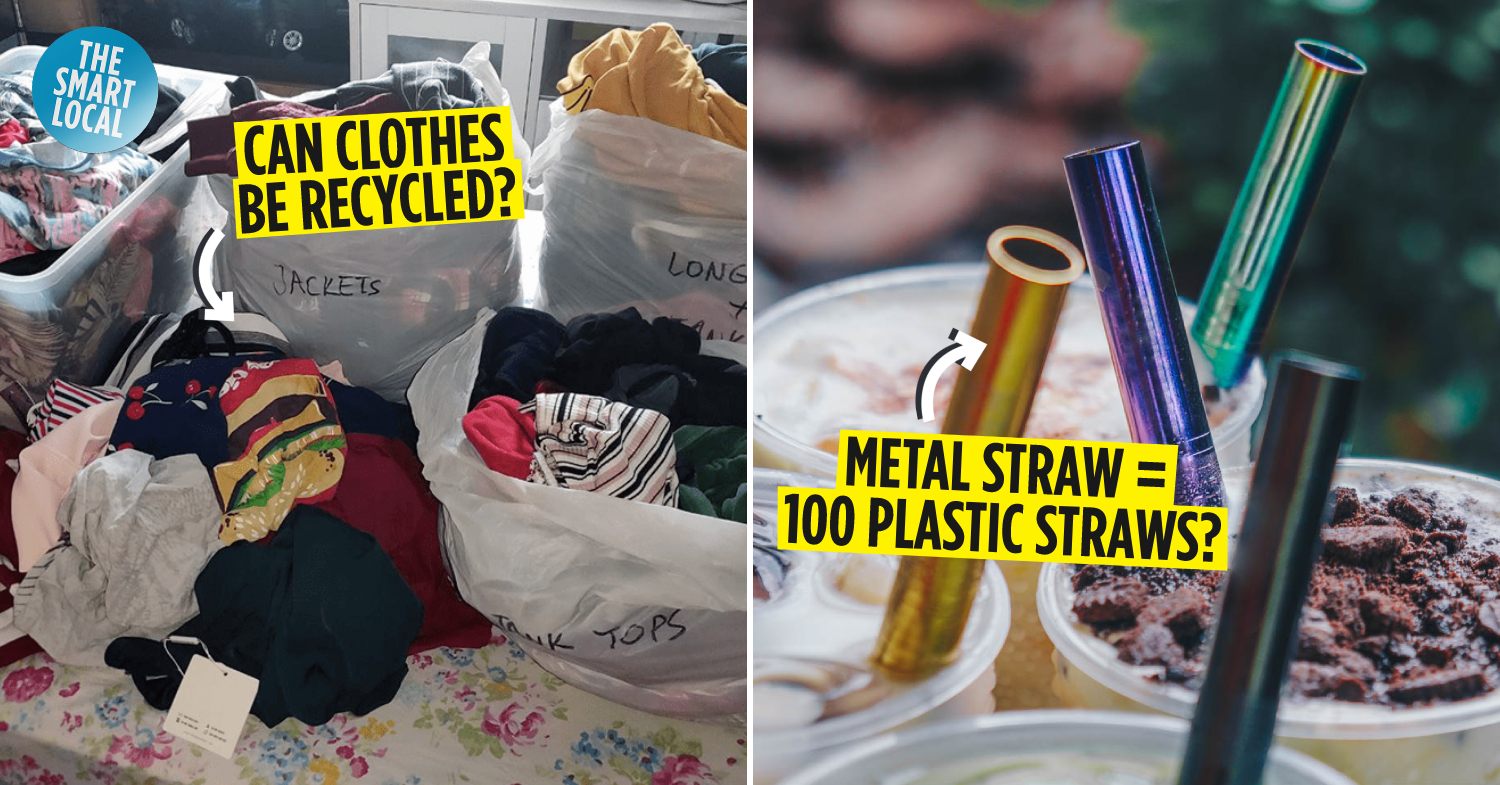Recycling myths in Singapore
Reduce, reuse and recycle – everyone knows the adage by heart. But with terrifying news of rising sea levels and natural disasters every other day, you might be keen to put that into action for a greener lifestyle. To clear the air on everything from metal straws to recycling bin dos and don’ts, these seven recycling myths in Singapore will help you do your part for Mother Earth – effectively.
Check out our other articles on adopting a more sustainable lifestyle in Singapore:
- Guide to recycling in Singapore
- Ways to give expiring food a new lease of life
- I tried making my habits more eco-friendly for a week
1. Biodegradable plastics are better than the regular stuff
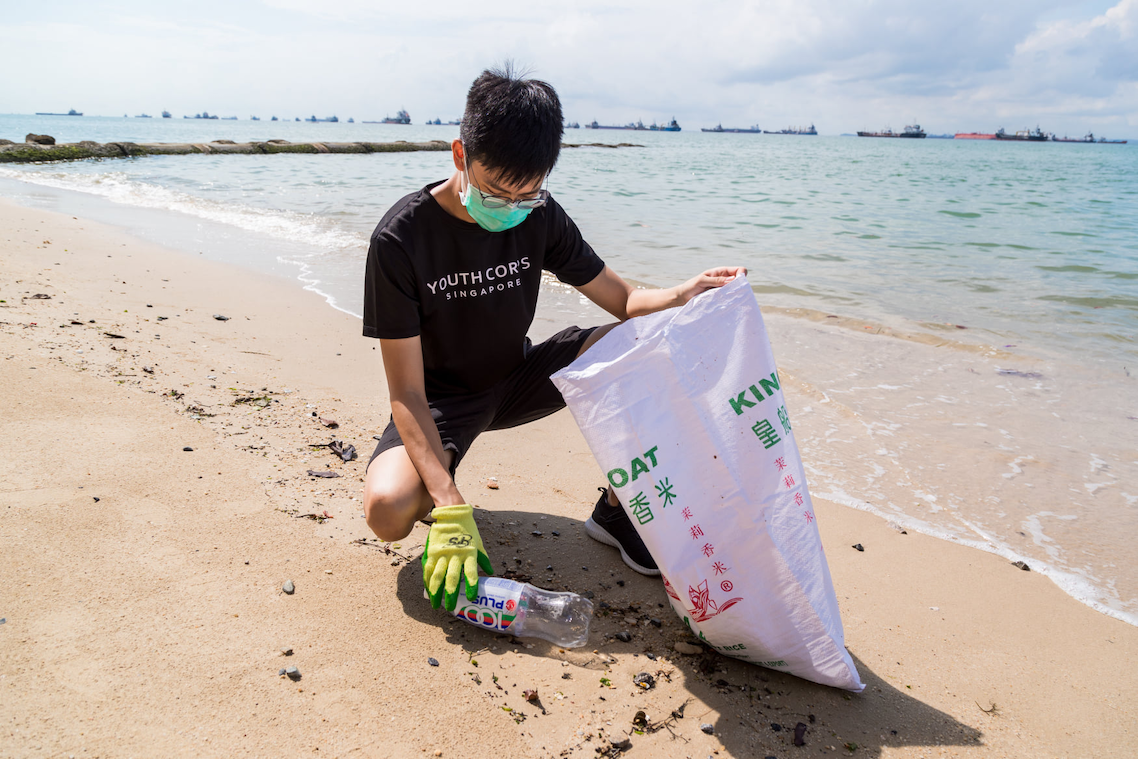
Most common plastics take decades or centuries to decompose – from 20 years for single-use bags to 450 years for PET bottles.
Image credit: Youth Corps Singapore
These days, head out to East Coast Park or Changi Beach and you can expect long stretches filled with sun, sand … and plastic scraps washed up from the sea. Though they might seem like an eco-friendly solution to the swaths of plastic trash that seem to pop up everywhere, most biodegradable plastics are actually unrecyclable as they contain vegetable oil and cornstarch.
To make matters worse, certain types of the material like oxo-degradable plastics break down into microplastics over time and enter our food ecosystem. We Singaporeans now consume up to 5 grams of plastic a week – the equivalent of a credit card.
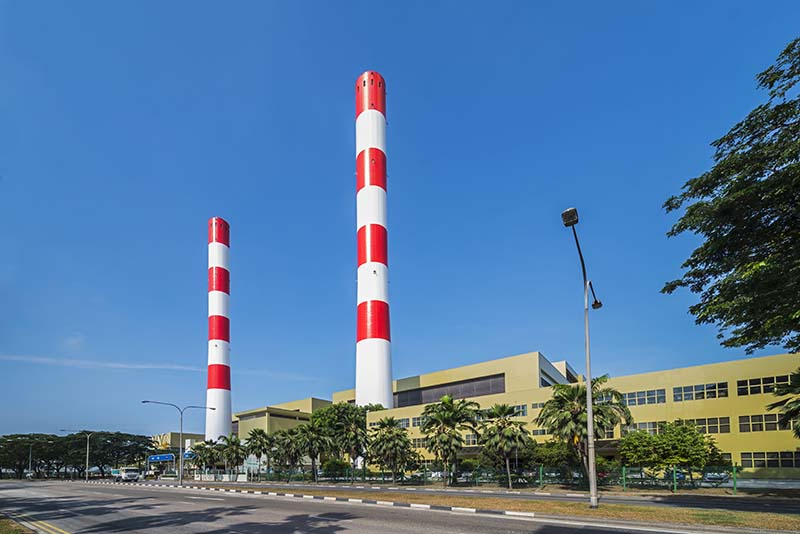
Singapore’s waste system uses incinerators – or Waste To Energy plants – which reduce total trash volume by 90% and reduce the likelihood of plastics leaking out into our waterways.
Image credit: Zero Waste Masterplan
Instead, biodegradable plastics have to be processed at special industrial facilities for safe disposal – facilities that cannot be found in Singapore. As such, these “greener” options will likely end up alongside our regular trash at the incinerator anyway.
2. Clothing can be recycled
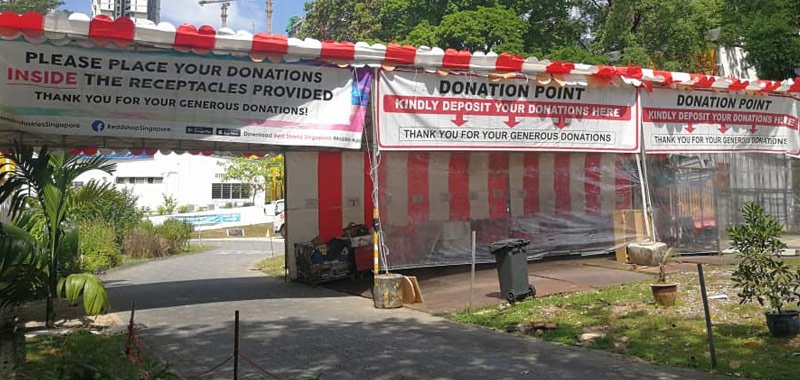
Recycling fabrics is often highly labour intensive and results in weaker products that are often unsuitable for clothing. Instead, they should be donated or disposed of properly.
Image credit: Red Shield Industries
Perhaps inspired by the iconic karang guni jingle calling for “used newspapers, shirts and pants, radios and televisions” along our common corridors each weekend, most Singaporeans seem to believe that textiles are recyclable in Singapore.
According to a 2019 NEA survey of thousands of households, only 13% of locals knew that clothing should not be put into recycling bins. With a mind-boggling array of textiles, fibres and fabric blends used in all manner of clothing, recycling clothing is an extremely slow and labour-intensive process – and is not practised on our shores.
Apart from fabrics, there’s a long list of other items Singaporeans mistakenly place in recycling bins. These items should be thrown away instead, or donated if in working condition:
- Shoes and bags
- Soiled food packing materials like used pizza boxes and teabags
- Melamine utensils and plastic toys
- Both clean and soiled tissue paper
- Ceramics and some glass items like cookware, mirrors and bulbs
- Styrofoam
- Straws
3. If there are no rubbish bins nearby, the recycling bin works too
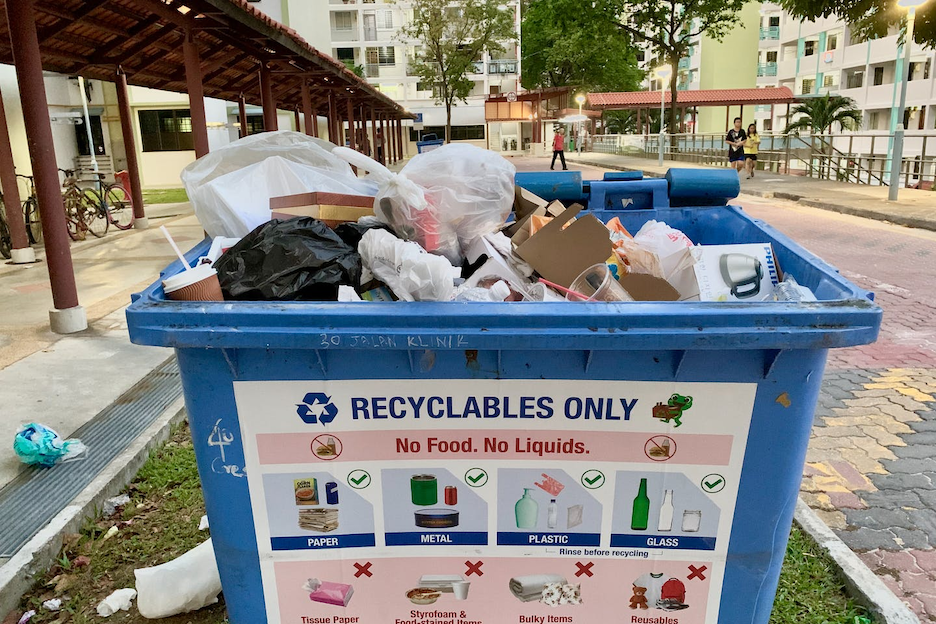
Image credit: eco-business
For Singaporeans abroad, one of the things they miss the most about home is the ubiquitous green bins located at nearly every bus stop, junction and lift landing. But as blessed as we are to have an efficient waste management system here, it’s still a common sight to spot food waste and other non-recyclables atop our blue recycling bins.
While littering is a definite no-no, it’s equally irresponsible to toss non-recyclable trash into a recycling bin as it can contaminate the other items within. This is especially the case for food items like your half-drunk cup of coffee or even unrinsed drink cans. In fact, 40-50% of recyclables have to be incinerated each year because of contamination.
4. Recycling lets us reuse plastics unlimited times
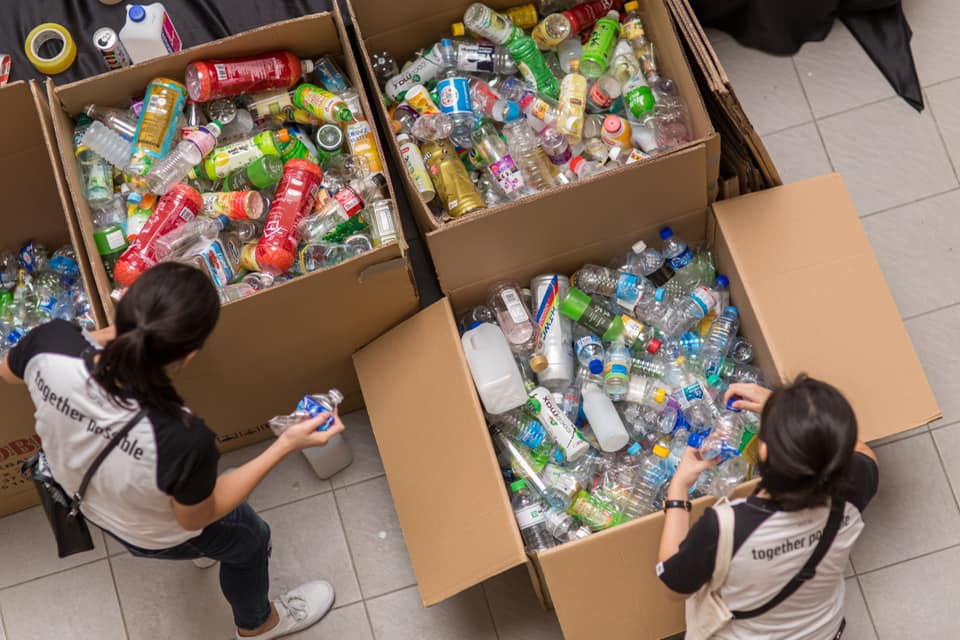
PET used in beverage bottles is one of the most recyclable plastic materials
Image credit: WWF-Singapore
Cheap, durable, and available in a whole assortment of shapes and sizes, plastics are quite the wonder material – and are found in everything from the clothes we wear to the furniture adorning our homes. But not all plastics are created equal: high-quality materials have long molecule chains that make them strong, lightweight and flexible.
However, during the recycling process, these long chains inevitably get shortened, causing these properties to weaken. Most plastics can only be recycled two or three times before they’re not fit for use, and have to be incinerated along with other trash. Throughout their lifespan, plastics also have to be augmented with virgin material to help boost their quality.
Instead, opt for products made from metal and glass as these materials are generally infinitely recyclable – though you’ll have to fork out a little more as they can be pricier to produce and transport safely.
5. Using reusable straws will help save the environment

Metal straws might be much more durable and recyclable than single-use plastic straws, but they require immense amounts of energy to produce.
Image credit: Eatbook
But while metal and glass alternatives to single-use plastics are much more durable for long-term use, and are highly recyclable once you’re done with them, they also consume vastly greater amounts of energy to produce. In fact, metal straws have to be used over 100 times before they break even against plastic straws.
Likewise, reusable bags like totes can also be actually less eco-friendly than both reusable and single-use plastic bags. Specifically, in the case of organic cotton tote bags, they have to be used over 1,000 times to match the environmental impact of a single-use bag – due to the immense amount of water and energy required to grow and harvest the cotton.

Research has shown that reusable bags made from plastic actually have the least impact on the environment due to their durability and ease of manufacture
Image credit: Ikea
The solution? Avoid using items you don’t strictly need – you’re just as fine drinking from the cup as you are sipping from a straw. But for your essential reusables, be sure you actively use them for the long haul – and don’t be too tempted to snag that fancy new tote bag or cute new lunch box.
6. As long as I’m recycling, I’m doing good for the environment
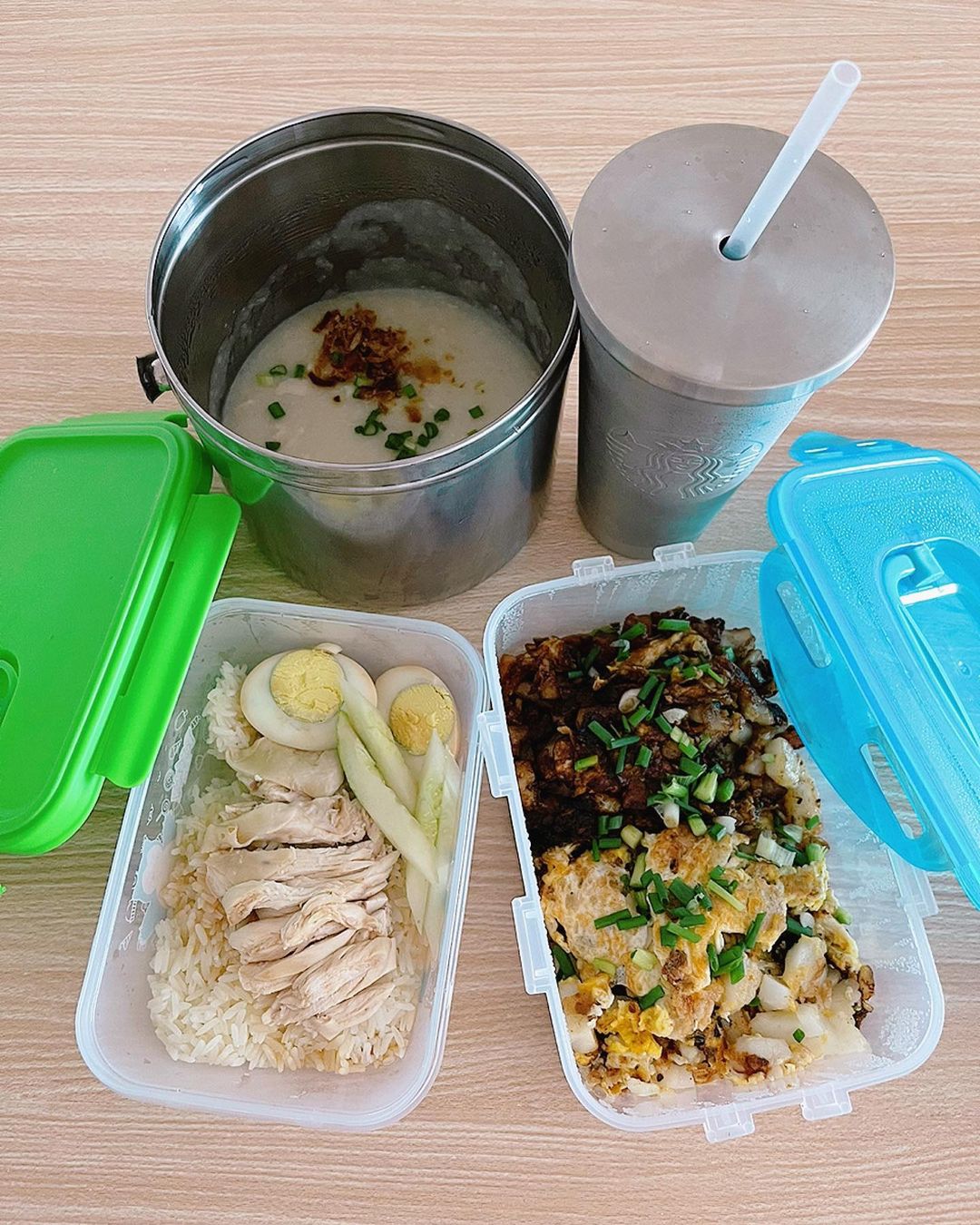
Recycling can help to maximise the use of our resources, but simple steps like using reusable containers help us avoid single-use products entirely.
Image credit: @shanjae
While recycling does wonders giving our planet’s limited resources a new lease of life and reducing the energy used to produce materials, reducing waste in the first place is far more effective at reducing emissions and pollution.
As with any industrial process, recycling consumes lots of energy and creates emissions. Especially with plastics, it can be quite inefficient – apart from degrading with each use, only 4% of plastic in Singapore is recycled, and about 18% globally. Your recyclables might also end up in the incinerator anyway – due to various factors like contamination and low demand for recycled products.
So, apart from religiously sorting and dropping off our barang at the recycling bin, you’ll also want to take steps to reduce overall unnecessary consumption. This might mean bringing your own containers and refusing plastic bags and utensils when you dabao, but you can also go the extra mile by shopping pre-loved instead of buying brand new.
7. Recycling bins are the only way to give our waste a new lease of life
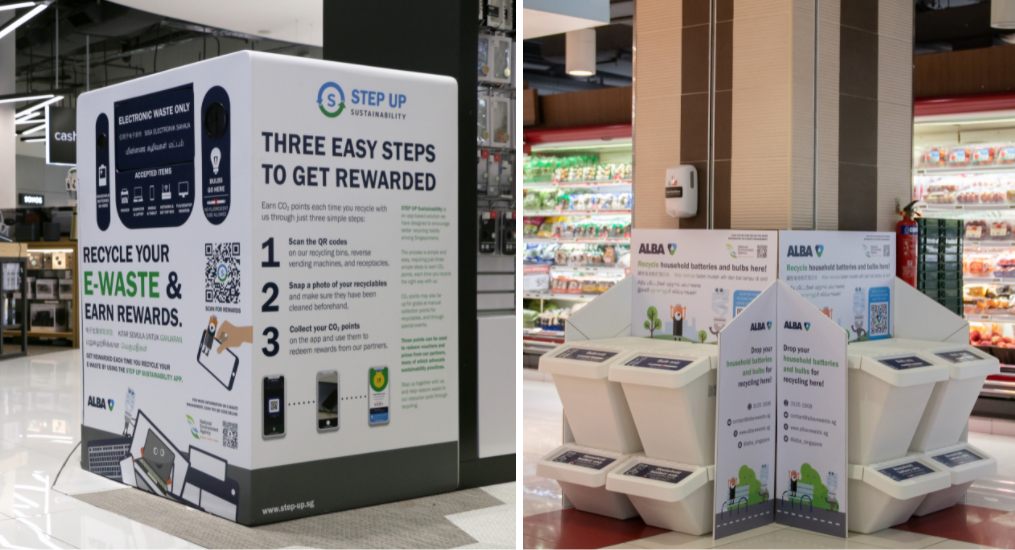
Image credit: National Environment Agency (NEA), Amy Khor
Many of us might be familiar with the blue bins below our HDB blocks, outside our homes, or are even lucky enough to have the convenient new recycling chutes at our doorstep. But while we’re blessed to be able to drop off our recyclables without the thorough sorting you’d have to do in Taiwan or Japan, you’ll still have to be careful to only include suitable materials.
But before you toss the rest of your trash, you’ll also want to look out for other recycling and waste disposal facilities available in Singapore. From over 350 e-waste collection points islandwide to collect your bulbs and fridges to donation centres, reverse vending machines and our familiar karang guni, you can also try your hand at composting to manage food waste.
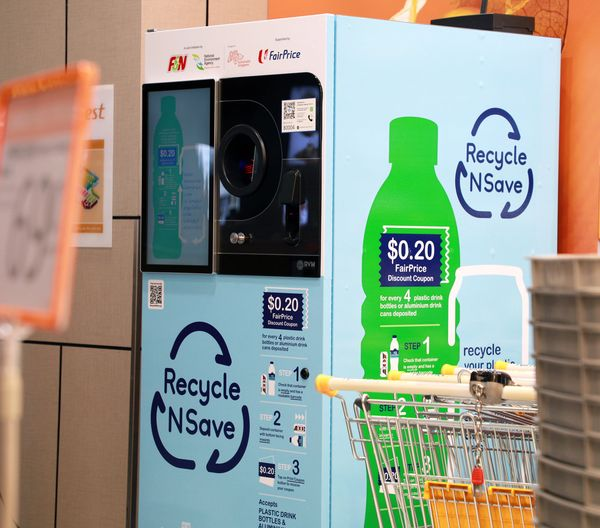
Reverse Vending Machines located around Singapore dispense rewards like ActiveSG credits and FairPrice coupons when you return bottles and cans
Image credit: National Environment Agency (NEA)
Debunking recycling myths in Singapore

Image credit: National Environmental Agency (NEA)
For many of us, sustainability starts with the recycling logo and ends at our ubiquitous blue bins. But with this closer look at our waste and recycling system in Singapore, you’ll be able to debunk myths and misconceptions and make the right decisions in your day-to-day purchases.
Whether it’s a better knowledge of the different types of plastics or a swath of ways to give our items a new lease of life, these habits will help us better manage our resources for future generations.
Check out our other articles that debunk myths and misconceptions in Singapore:
Cover image credit: Renae Cheng, Eatbook
